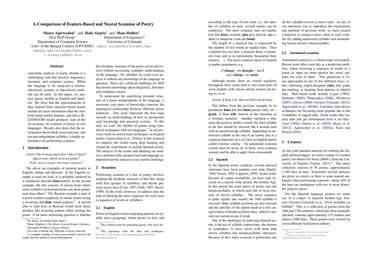A Comparison of Feature-Based and Neural Scansion of Poetry
Automatic analysis of poetic rhythm is a challenging task that involves linguistics, literature, and computer science. When the language to be analyzed is known, rule-based systems or data-driven methods can be used. In this paper, we analyze poetic rhythm in English and Spanish. We show that the representations of data learned from character-based neural models are more informative than the ones from hand-crafted features, and that a Bi-LSTM+CRF-model produces state-of-the art accuracy on scansion of poetry in two languages. Results also show that the information about whole word structure, and not just independent syllables, is highly informative for performing scansion.
PDF Abstract RANLP 2017 PDF RANLP 2017 Abstract